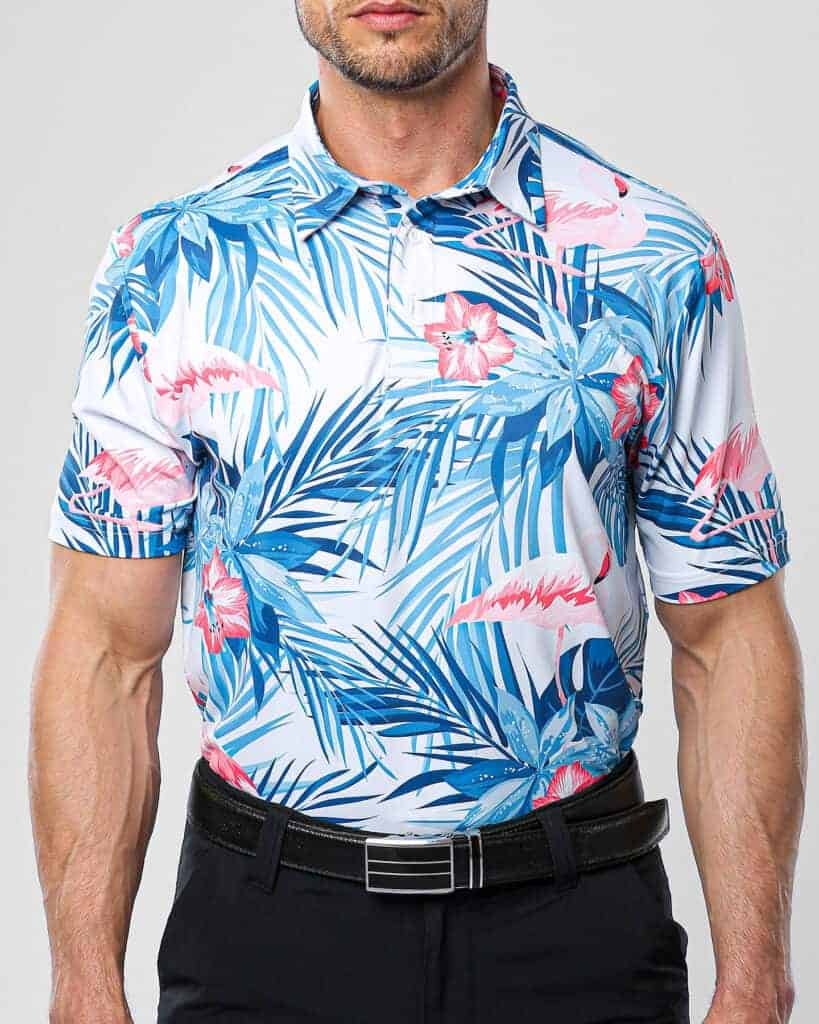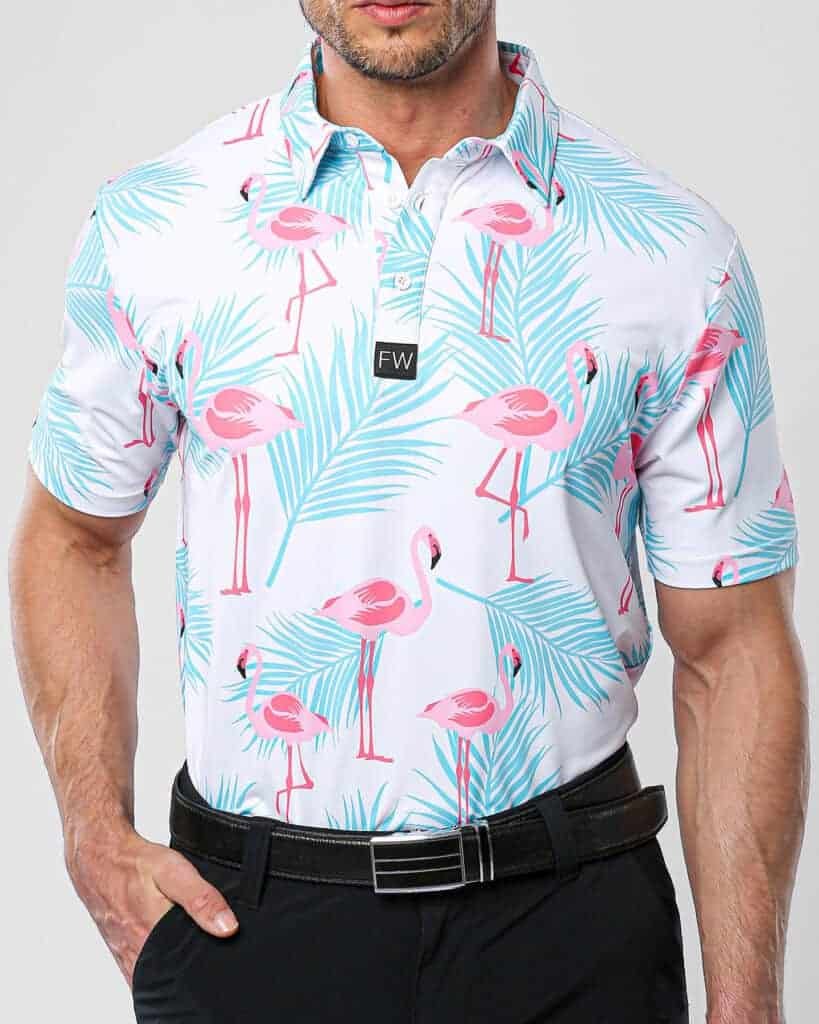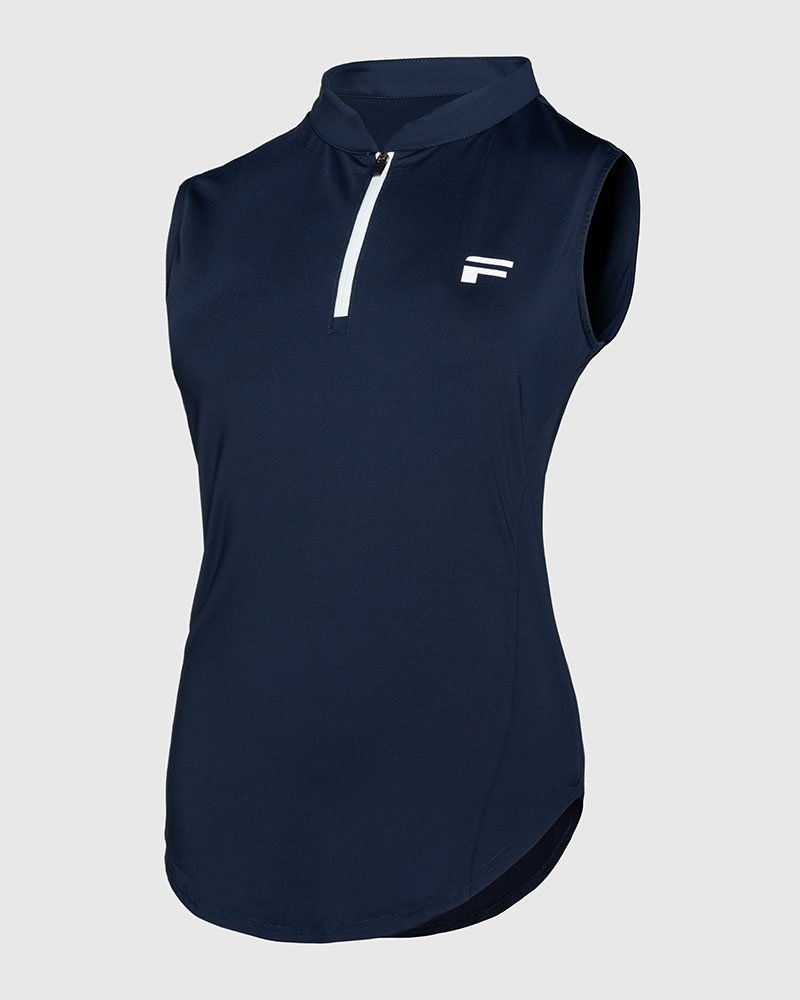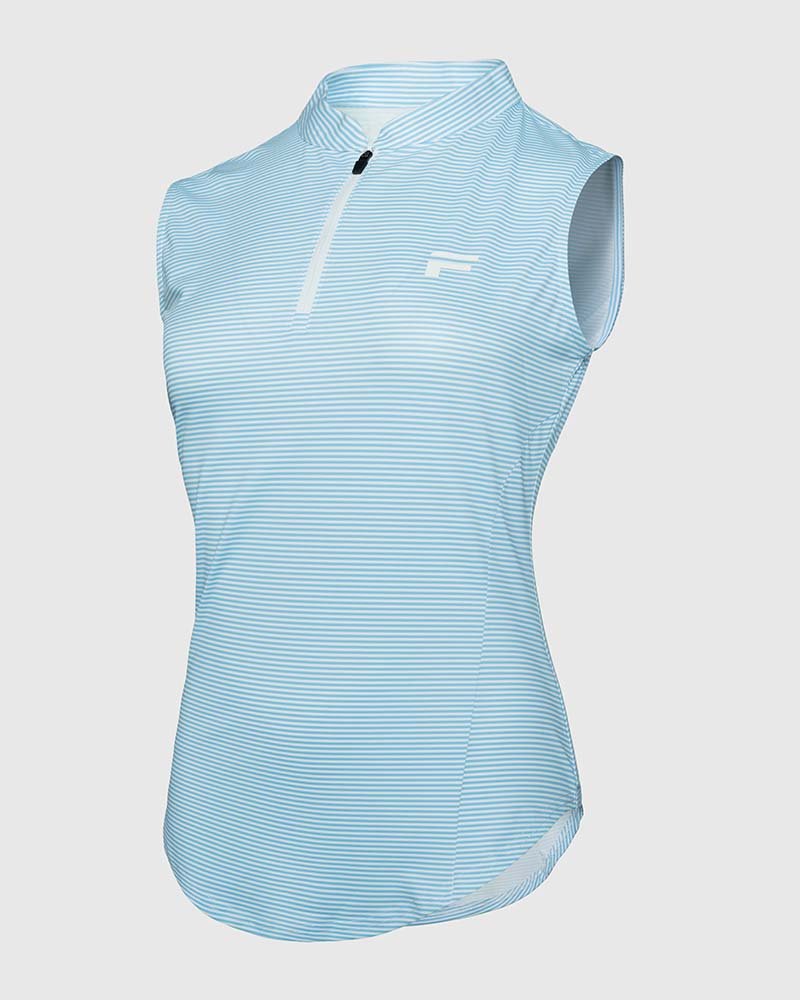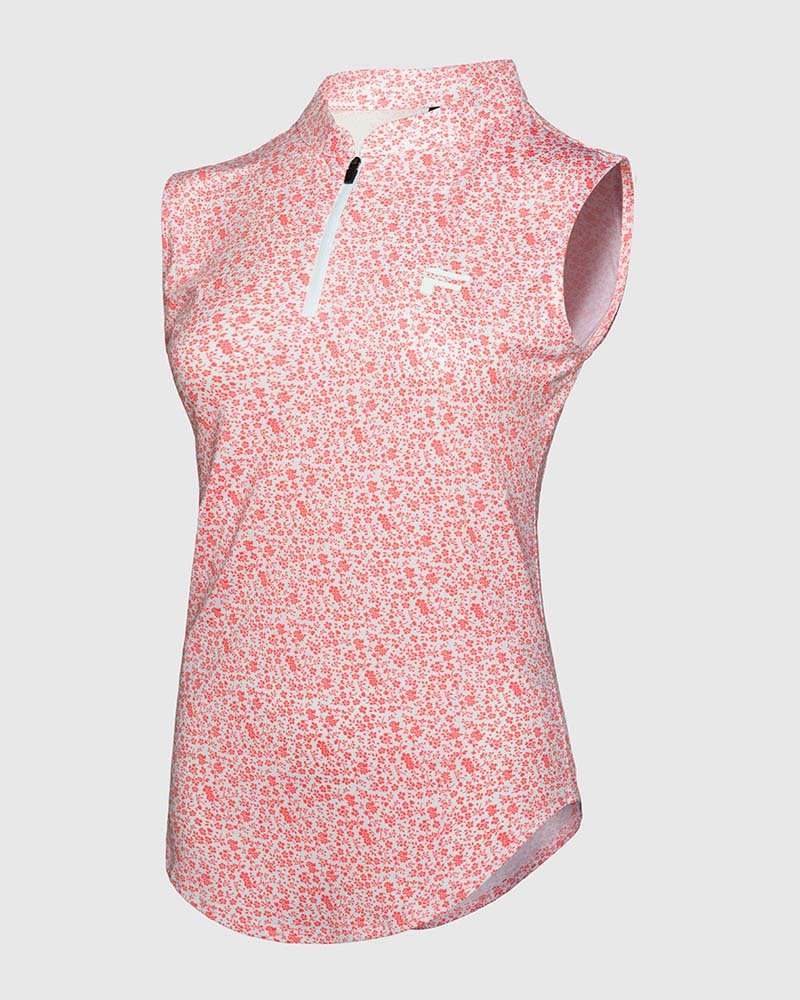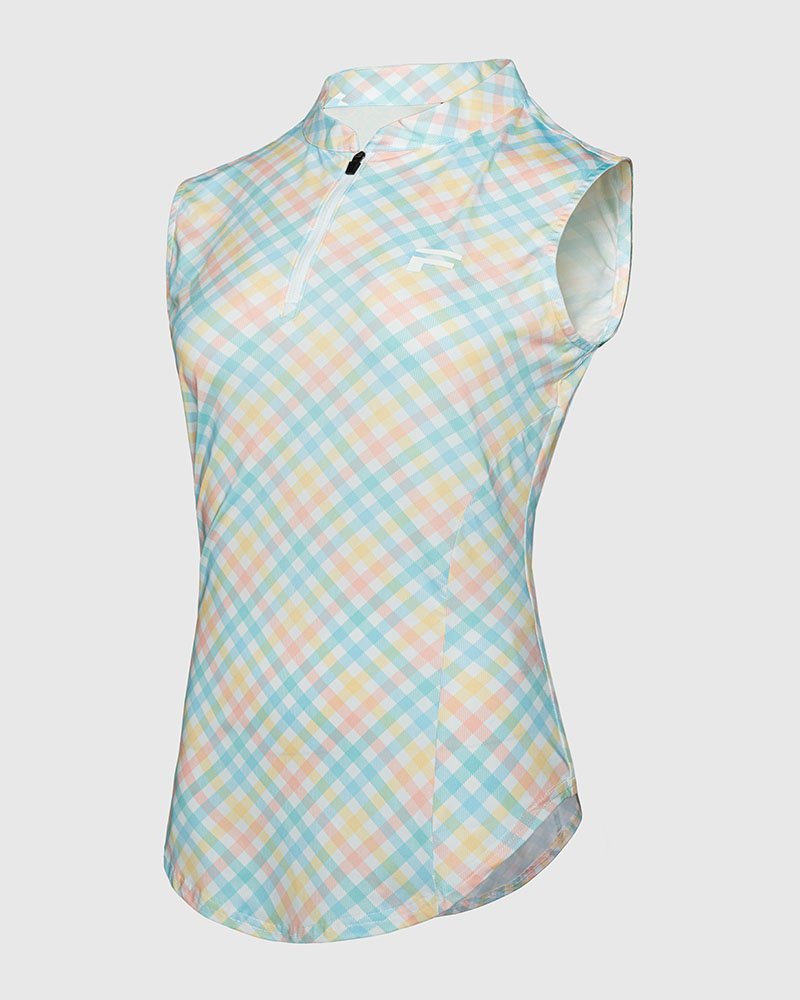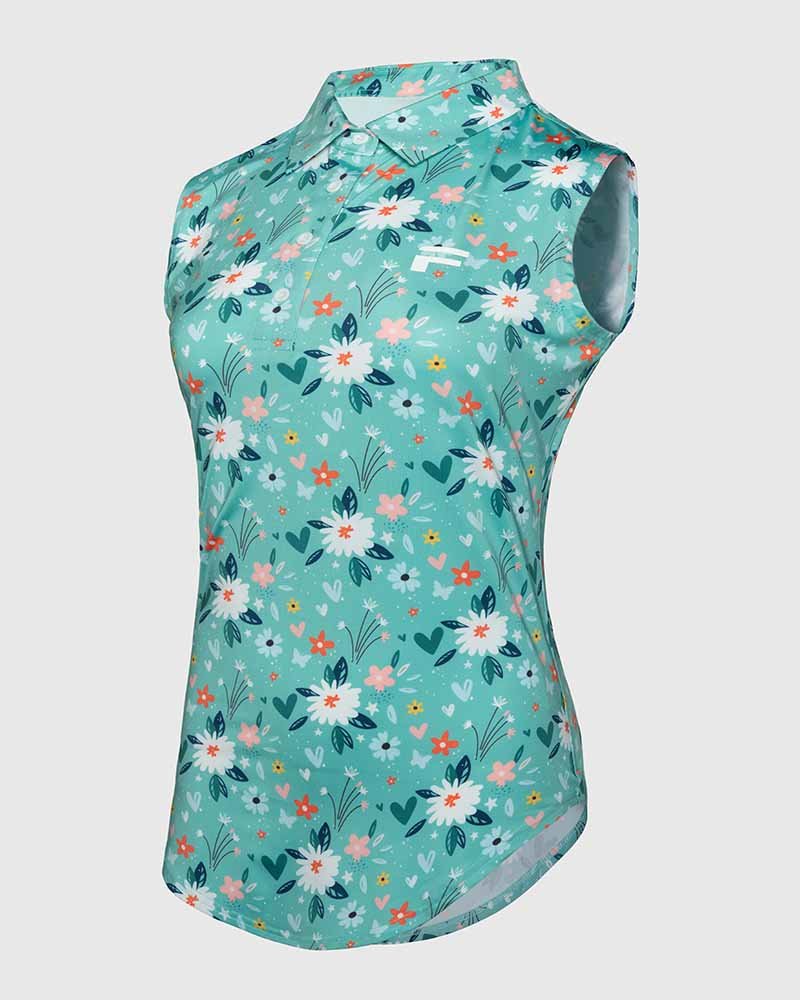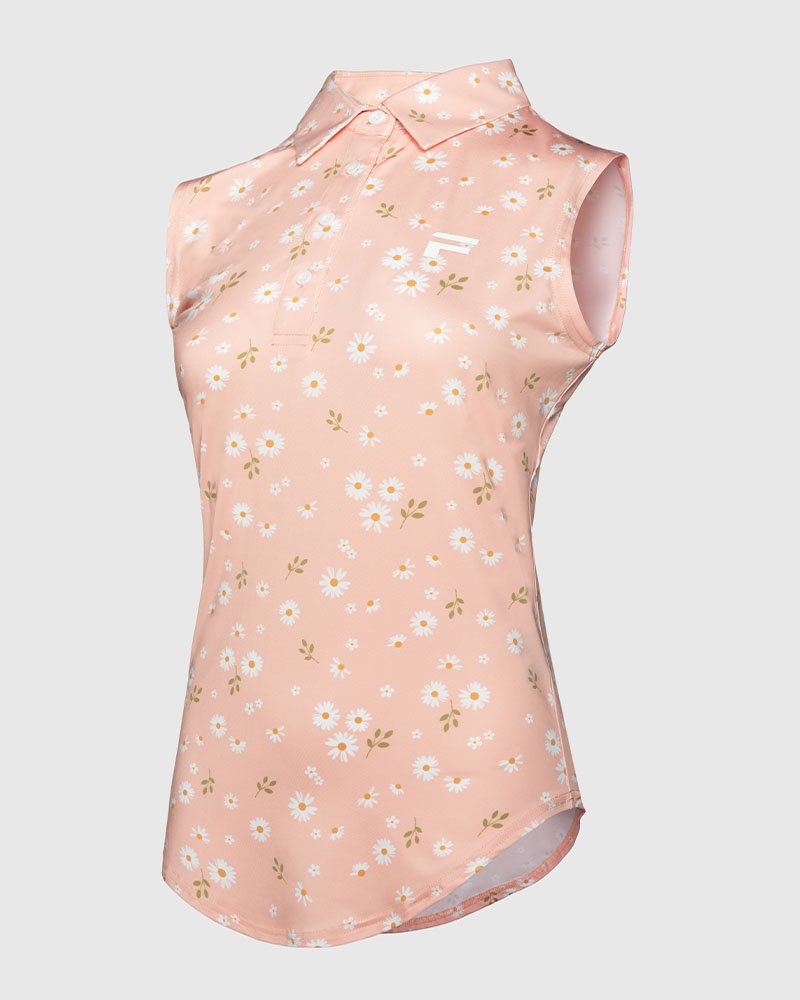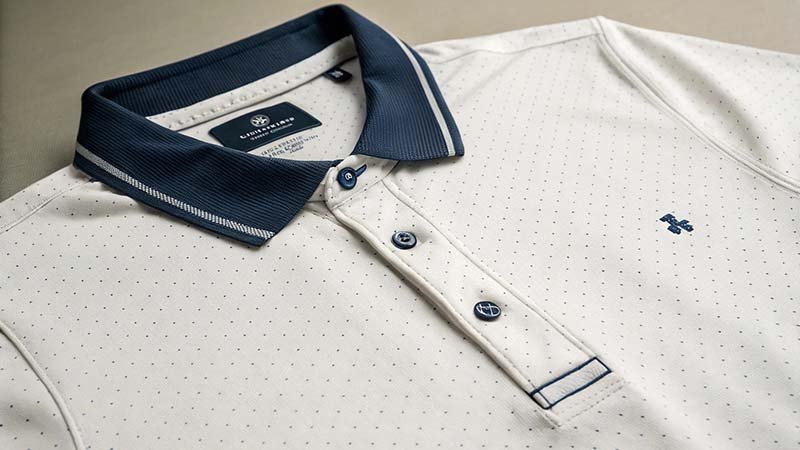Struggling to pick the right polo fabric? A bad choice can make your customers feel sweaty and restricted on the course. The right material makes all the difference.
The best fabrics for golf polos are performance materials. Look for polyester for moisture-wicking, spandex for four-way stretch, and fabrics with UV protection. These materials ensure golfers stay dry, comfortable, and can move freely during their swing. They are the standard for modern golf apparel.

The fabric of your polo shirt is a piece of equipment, just like a set of clubs. It can either help your game or hurt it. I’ve spent years in the textile business, and I’ve seen firsthand how much fabric technology matters. It’s not just about how a shirt looks on a hanger; it’s about how it performs under pressure on a hot afternoon. So, let's break down exactly how different materials can make or break a golfer's experience on the course.
How do different fabrics impact golf performance and experience?
Ever felt like a shirt was fighting your swing? A stiff, sticky polo is a major distraction that can throw off your game. The right fabric should feel like it's not even there.
Fabrics directly impact your game. Performance materials, like polyester blends, give you the stretch needed for a full swing. Natural fibers, such as cotton, feel soft but get heavy with sweat. Your fabric choice will affect a golfer's movement, comfort, and overall focus on the course.

When I started in a small textile factory, I learned that fabric is the foundation of any good piece of apparel. For golf, this is even more true. The wrong fabric choice doesn’t just feel bad; it can actively hinder performance. We can break down the impact into a few key areas that every brand owner needs to understand.
Freedom of Movement
Your golf swing is a complex, athletic motion. If your shirt is tight or has no give, it restricts your rotation. This is where stretch fabrics, particularly those with spandex or elastane, are essential. Even a small percentage, around 5-10%, creates a four-way stretch that moves with the golfer. Without it, a player might shorten their backswing or finish, losing power and accuracy.
Comfort and Focus
Golf is a mental game. Distractions can be costly. A shirt that traps sweat and heat is a huge distraction. When a golfer feels hot, sticky, and uncomfortable, their focus shifts from the next shot to their own discomfort. Performance fabrics that manage moisture and temperature help keep the mind clear and focused on the game.
Performance Fabric Comparison
| Feature | Performance Polyester | 100% Cotton | Impact on the Golfer |
|---|---|---|---|
| Moisture Management | Wicks sweat away | Absorbs and holds sweat | Polyester keeps you dry; cotton becomes heavy. |
| Stretch & Flexibility | Excellent (with spandex) | Very limited | Polyester allows a free swing; cotton restricts it. |
| Durability | High | Moderate | Polyester holds its shape and color better over time. |
| Breathability | Good | Excellent (when dry) | Both are breathable, but cotton fails when wet. |
Why is moisture-wicking capability a core criterion in golf polo fabric selection?
Are you tired of seeing polos soaked with sweat by the fifth hole? It’s not just uncomfortable; it's heavy and can make a player feel self-conscious. Moisture-wicking is the simple solution.
Moisture-wicking is critical because it pulls sweat from your skin to the fabric's outer layer, where it can evaporate. This keeps a golfer dry, cool, and comfortable. It also prevents chafing and the clingy feeling of a sweat-soaked shirt, allowing for better focus.

I’ve seen a lot of brands make the mistake of choosing a fabric based on how soft it feels dry. But a golf polo isn't meant to be worn in an air-conditioned store; it's meant for hours under the sun. That’s where moisture-wicking technology becomes non-negotiable.
The Science of Staying Dry
It all comes down to how fibers interact with water. Synthetic fibers like polyester are hydrophobic, which means they naturally repel water. Instead of absorbing sweat, they push it through the tiny gaps in the fabric to the surface. This process is called "wicking." Once on the surface, the moisture can evaporate quickly. In contrast, natural fibers like cotton are hydrophilic, meaning they love water. They absorb it like a sponge, which is why a cotton shirt feels so heavy and takes forever to dry once you start sweating.
The Problem with Traditional Cotton
When I work with new brands, I often have to explain why 100% cotton is a poor choice for serious golf apparel. While it’s breathable and soft at first, it becomes a liability on the course. Once wet, cotton loses its shape, clings to the skin, and can actually make you feel colder if the wind picks up because the trapped moisture cools down. It completely loses its performance benefits.
More Than Just Dryness
The benefits of moisture-wicking go beyond just feeling dry. A dry shirt is less likely to chafe or cause skin irritation during the repetitive motion of a golf swing. Plus, by moving moisture away, it slows the growth of odor-causing bacteria, helping the polo stay fresher for longer. It's a key feature for both comfort and hygiene.
How can golfers evaluate the comfort and breathability of polo fabrics?
A polo can look perfect on the rack. But after a few holes, it might feel like you're wearing a plastic bag. You need to know how to spot true comfort and breathability.
To evaluate comfort, feel the fabric for softness and do a stretch test. For breathability, hold the material up to a light source—a more open weave lets more light through. Always check the label for polyester and spandex blends, which indicate performance features.

You don't need a lab to figure out if a fabric is good. With years of handling textiles, I've learned a few simple tests that anyone can do. When you're sourcing polos for your brand, these hands-on checks will tell you more than any product description.
The Touch and Feel Test
First, just touch the fabric. A quality performance polo should feel smooth and light. It shouldn't have a plastic-like or rough texture. Some of the best modern polyesters are engineered to have a "cotton-hand" feel, giving you the best of both worlds: a soft touch with high performance. Rub the fabric between your fingers. Does it feel cool to the touch? This is often a sign of good moisture management and breathability.
The Stretch and Recovery Test
Next, test the stretch. Gently pull the fabric widthwise and lengthwise. It should stretch easily without much resistance. This is the "four-way stretch" that provides freedom of movement. Just as important is "recovery." Let the fabric go. Does it snap back to its original shape instantly? If it stays stretched out or returns slowly, the shirt will sag and lose its fit after a few wears and washes. Good recovery is a sign of high-quality spandex fibers.
Fabric Composition Guide
| Fabric Blend | Primary Benefit | Ideal For |
|---|---|---|
| 95% Polyester / 5% Spandex | Balanced Performance | The all-around standard for golf polos. |
| 100% Polyester | Max Durability & Wicking | Hot, humid climates where staying dry is key. |
| 88% Polyester / 12% Spandex | Maximum Flexibility | Golfers who want ultimate freedom of movement. |
| Polyester / Cotton Blend | Soft Feel | More for casual or off-course wear. |
What innovative technical fabrics are shaping the future of golf polo shirts?
A standard performance polo is great. But what if a shirt could do even more, like actively cool you down or be made from recycled materials? New fabric tech is changing the game.
The future of golf polos is in smart fabrics. Innovations include recycled polyesters for sustainability, mineral-infused yarns for active cooling, and silver-ion threads for permanent anti-odor control. These materials offer benefits far beyond basic stretch and wicking.
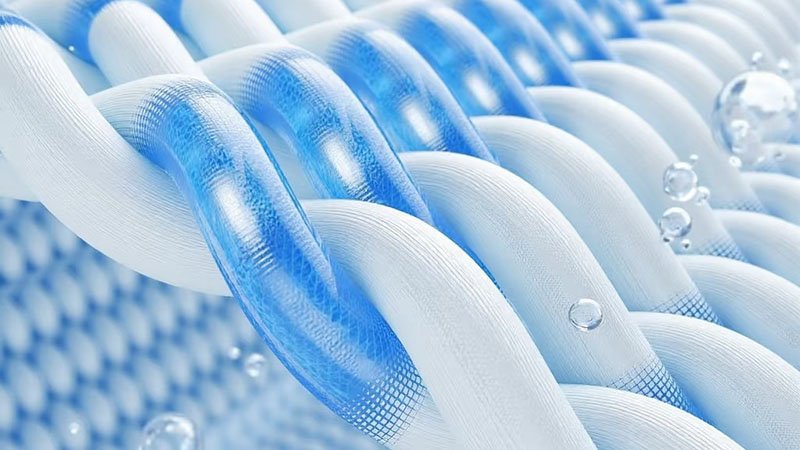
Being in the apparel industry means I always have my eye on what's next. The pace of innovation in technical textiles is amazing. For golf brands looking to stand out, using these new materials is a great way to offer real value to customers. The polo shirt is becoming more than just a shirt; it's a piece of high-performance gear.
Sustainability is the New Standard
One of the biggest trends is the move to recycled polyester, often called rPET. This fabric is made from melted-down plastic bottles but has the same performance characteristics as virgin polyester. It wicks moisture, resists wrinkles, and is very durable. For new brands like Bobby's, offering a product that is both high-performance and environmentally friendly is a powerful story that resonates with modern consumers.
Active Cooling and Odor Control
We're moving beyond passive moisture wicking. Some new fabrics are infused with minerals like jade or titanium dioxide, which create a cooling sensation against the skin. They continuously draw heat away from the body. Another major advancement is in odor control. Instead of a chemical finish that washes out, some fabrics now have silver ions embedded in the fibers. Silver is naturally antimicrobial, so it stops odor-causing bacteria from growing permanently.
High-Tech Natural Blends
The innovation isn't just with synthetics. We're seeing amazing new blends that combine the best of natural and man-made fibers. For example, blending polyester with Tencel™ (a fiber made from wood pulp) creates a fabric that is incredibly soft, breathable, moisture-wicking, and sustainable. Other blends use bamboo, which offers a soft feel and natural antibacterial properties. These hybrid fabrics deliver a luxury feel without sacrificing on-course performance.
How should durability and cost-effectiveness be balanced when choosing golf polo fabrics?
You want the best possible fabric for your brand's polos. But cutting-edge materials and features can quickly increase your costs. The key is to find the sweet spot between premium quality and a smart price.
Balance cost and durability by focusing on high-quality polyester and spandex blends. They offer the best mix of performance, longevity, and value. While cheaper options exist, investing in a durable fabric prevents pilling and fading, protecting your brand's reputation and saving money in the long run.

As someone who has helped hundreds of brands get started, this is a conversation I have all the time. The price tag on a roll of fabric is just one part of the equation. A brand's reputation is built on quality, and for apparel, that means durability.
The True Cost of a Polo
A cheaper fabric might save you money on your initial order, but it can cost you more down the road. Poor-quality fabrics are prone to pilling (those little balls of fuzz), color fading after a few washes, and losing their shape. When a customer's polo looks old after one season, they won't blame the fabric; they'll blame your brand. Investing a little more in a durable fabric from a reliable mill is an investment in customer loyalty and positive reviews.
The Sweet Spot for Value
For most golf brands, the sweet spot is a blend of about 92-95% polyester and 5-8% spandex. Polyester is the workhorse of performance fabrics. It’s incredibly durable, holds color well, resists shrinking, and of course, it wicks moisture. Adding just a small amount of spandex provides the essential four-way stretch without dramatically increasing the cost. This blend delivers over 90% of the performance that golfers need at a very effective price point.
Where to Invest for a Premium Edge
If you want to create a premium polo, that's when you invest in added features. This could mean using a branded fiber like Coolmax® or Repreve® (recycled polyester), which have strong marketing stories. You could also add finishes for UV protection (UPF 50+), advanced cooling technology, or permanent anti-odor treatments. These features add to the cost, but they also create clear selling points that justify a higher retail price for your customers.
Conclusion
Choosing the right fabric is the foundation of a great golf polo. Focus on moisture-wicking, stretch, and durability to create a shirt that players will love and trust.




